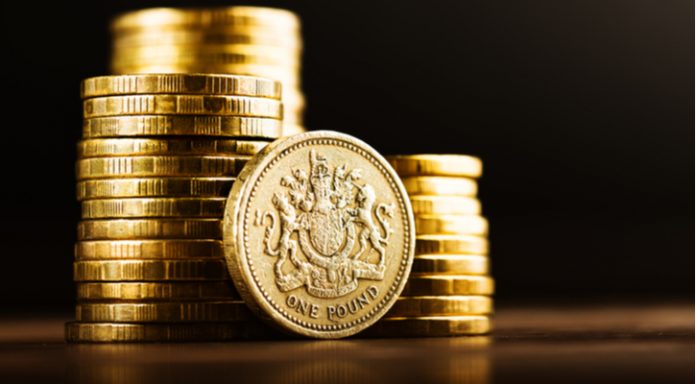Despite an early climb higher, the pound US dollar exchange rate finished the previous session more or less where it had started. The pound US dollar exchange rate hit a peak of US$1.3086, before dropping some 50 points towards the close.
| What do these figures mean? |
|---|
|
When measuring the value of a pair of currencies, one set equals 1 unit and the other shows the current equivalent. As the market moves, the amount will vary from minute to minute. For example, it could be written: 1 GBP = 1.28934 USD Here, £1 is equivalent to approximately $1.29. This specifically measures the pound’s worth against the dollar. If the US dollar amount increases in this pairing, it’s positive for the pound. Or, if you were looking at it the other way around: 1 USD = 0.77786 GBP In this example, $1 is equivalent to approximately £0.78. This measures the US dollar’s worth versus the British pound. If the sterling number gets larger, it’s good news for the dollar. |
The pound received an early boost from strong UK employment data. Data from the Office of National Statistics showed that average earnings grew at a faster pace than what analysts had been predicting. Pay, excluding bonuses increased 2.9% year on year in the three months to July, up from the 2.7% recorded in June. The data supports the BoE’s theory that the tightening of the labour market would translate into stronger wage growth.
| How does strong jobs data boost the currency? |
|---|
| It works like this, when there is low unemployment and high job creation, the demand for workers increases. As demand for workers goes up, wages for those workers also go up. Which means the workers are now taking home more money to spend on cars, houses or in the shops. As a result, demand for goods and services also increase, pushing the prices of the goods and services higher. That’s also known as inflation. When inflation moves higher, central banks are more likely to raise interest rates, which then pushes the worth of the currency higher. |
Whilst this wage data is a solid step in the right direction, the rate of growth is still below what the economists would generally expect when unemployment is at 4%. The low level of unemployment should give workers greater bargaining powers and lead to higher wages and inflationary pressure.
BoE Governor Mark Carney agreeing to extend his current term to 2020 has also supported the pound. This would mean that Carney will no longer be leaving in the middle of the Brexit process; a move which offers stability at a potentially very turbulent time for the economy.
Yet despite all the good news the pound closed lower as investors are assuming no action from the BoE when they meet this Thursday.
Dollar Rallies As Data Supports Hike
Whilst the BoE are not expected to make any changes to monetary policy, economists are expecting the US Federal Reserve to hike interest rates when they meet later this month. Recent strong US economic data has reinforced the Fed’s plans to hike rates, lifting the dollar. Firstly, strong non-farm payrolls last Friday and then strong small business confidence report in the previous session are both supportive of a hike, lifting the dollar.
| Why do raised interest rates boost a currency’s value? |
|---|
| Interest rates are key to understanding exchange rate movements. Those who have large sums of money to invest want the highest return on their investments. Higher interest rate environments tend to offer higher yields. So, if the interest rate or at least the interest rate expectation of a country is relatively higher compared to another, then it attracts more foreign capital investment. Large corporations and investors need local currency to invest. More local currency used then boosts the demand of that currency, pushing the value higher. |
Trade war tensions also continue to support the dollar. With China seeking backing from the World Trade Organisation for $7 billion sanctions over dumping duties. Economists expect this to lead to decades of legal fighting.
This publication is provided for general information purposes only and is not intended to cover every aspect of the topics with which it deals. It is not intended to amount to advice on which you should rely. You must obtain professional or specialist advice before taking, or refraining from, any action on the basis of the content in this publication. The information in this publication does not constitute legal, tax or other professional advice from TransferWise Inc., Currency Live or its affiliates. Prior results do not guarantee a similar outcome. We make no representations, warranties or guarantees, whether express or implied, that the content in the publication is accurate, complete or up to date. Consult our risk warning page for more details.
This article was initially published on TransferWise.com from the same author. The content at Currency Live is the sole opinion of the authors and in no way reflects the views of TransferWise Inc.





